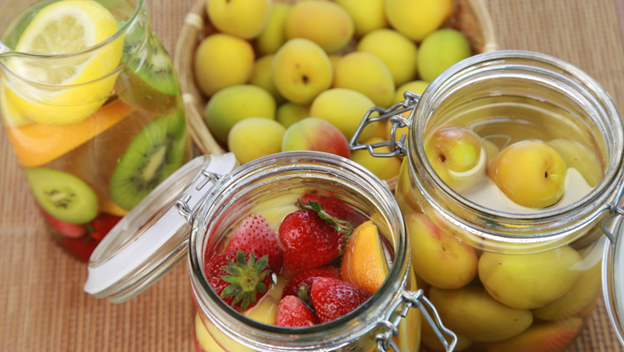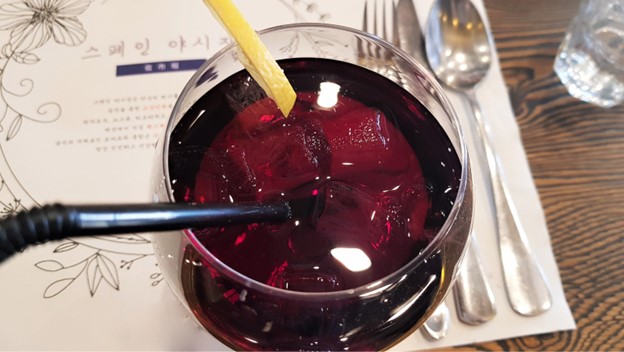Fruit wine is a type of alcoholic beverage that you can produce by fermenting the juice from various different fruits. This takes anywhere from several weeks to several months, depending on the type of fruit you use and the desired level of fermentation. While the production methods for different types of fruit wine may vary slightly, most types follow a similar basic process.
At its most basic level, making fruit wine involves extracting the juice from fresh or frozen fruit, then adding yeast and nutrient supplements to start the fermentation process. Once this initial stage is complete, it typically takes anywhere from several days to several weeks for the wine to fully ferment and reach optimal flavor and alcohol content levels. After this point, some wines may undergo a secondary fermentation process, while others may be bottled and enjoyed immediately.

What types of fruits can you use to make wine?
The type of fruit you can use to make wine is really only limited by the imagination of the winemaker. Popular fruits for making wine include grapes, strawberries, raspberries, blackberries, cherries, apples, peaches, pears, and plums. However, other fruits such as apricots, blueberries, figs, grapefruits, lemons, limes, oranges, pineapples, and even watermelons can also be used to create unique and delicious wines.
How long does it take to make fruit wine?
As mentioned earlier, the length of time required to make fruit wine can vary depending on a number of factors. In general, though, most types of fruit wine will take at least several weeks to ferment, although this process may take longer for certain fruits or when using more advanced winemaking techniques. Once the fermentation process is complete, many fruit wines will continue to improve with age and can be stored for long periods of time.

What are the benefits of making fruit wine?
There are many reasons why someone might choose to make fruit wine at home. For starters, it can be a fun and rewarding hobby that allows you to create unique and delicious beverages for you and your friends to enjoy. Additionally, making your own fruit wine can save you money compared to purchasing commercially-produced wines, and it also gives you greater control over the ingredients and methods used in production.
What Are The Different Types Of Fruit Wine?
While there are technically limitless possibilities when it comes to the types of fruit wine that can be made, there are a few common types that are enjoyed by wine enthusiasts around the world. Some of the most popular types include grape, berry, and citrus wines. Additionally, there is also a wide range of specialty fruit wines made from more exotic fruits such as raspberry wine cherry wine, peach wine, kiwis wine, pineapple wine, and even plum wine. So whether you prefer dry, sweet, spiced, or fruity wines, there is sure to be a type of fruit wine that appeals to your tastes.
Popular Fruit Wine Recipes
Grape Wine
Grapes are one of the most commonly used fruits for making wine. In order to make grape wine, you will need to extract the grape juice from fresh or frozen grapes, then add yeast and nutrient supplements to start the fermentation process.
Once this initial stage is complete, it typically takes anywhere from several days to several weeks for the wine to fully ferment and reach optimal flavor and alcohol content levels. After this point, some wines may undergo a secondary fermentation process, while others may be bottled and enjoyed immediately.
Berry Wine
You make berry wines in a similar fashion to grape wines. One extracts the juice of fresh or frozen berries and ferment it with yeast. The fermentation process usually takes several weeks, after which the wine can be bottled and enjoyed.
Citrus Wine
You can make citrus wines by using the juice of fresh citrus fruits such as lemons, limes, oranges, and grapefruits. As with other types of fruit wine, you extract the juice uand then ferment it with yeast. Citrus wines typically have a tart and tangy flavor, and they are often used as ingredients in cocktails or other mixed drinks.
Watermelon Wine
Watermelon wine is made using the juice of fresh watermelons. The fermentation process can take several weeks, and the finished product typically has a sweet and fruity flavor. Watermelon wines are often served chilled and are a popular choice for summertime gatherings.
How to Make Fruit Wine
Making fruit wine at home is a relatively simple process that only requires a few basic supplies and ingredients. In order to get started, you will need to gather the following items:
- Fresh or frozen fruits of your choice
- Yeast
- Sugar
- Water
- Wine bottles
- Corks
The first step in making fruit wine is to wash and sterilize all of your equipment. This includes your fermentation vessel, wine bottles, corks, and any other tools that will come into contact with the wine. Once your equipment is clean and sterilized, you can begin to prepare your fruit.
How to get juice for your fruit wine
If you are using fresh fruit juice, it is important to select ripe fruits that are free of blemishes or damage. Once you have gathered your fruit, wash it thoroughly and then cut it into small pieces. If you are using frozen fruit, there is no need to thaw it before use. Simply wash the fruit and then proceed to the next step.
The next step is to extract the juice from the fruit. This can be done by crushing the fruit by hand or using a juicer, blender, or food processor. Once the juice has been extracted, it should be strained to remove any seeds, pulp, or other solid matter.

Now that you have your juice, it is time to add yeast and sugar. The amount of yeast and sugar you will need will vary depending on the type and quantity of fruit you are using, so it is important to consult a recipe or wine-making guide for specific instructions. In general, you will want to use about 1/4 teaspoon of yeast per gallon (3.8 L) of juice, and 1/2 cup (120 ml) of sugar per gallon (3.8 L) of juice.
Fermentation
Once the yeast and sugar have been added, it is time to start the fermentation process. To do this, simply transfer the juice to your fermentation vessel, cover it with a clean cloth or piece of cheesecloth, and allow it to sit in a cool, dark place for several weeks. During this time, the yeast will consume the sugar and convert it into alcohol and carbon dioxide to create the fruit wine taste.
When the fermentation process is complete, you can bottle your traditional wine and enjoy it immediately. If you prefer a sweeter flavor, consider adding some additional sugar before bottling. And if you are looking for a more robust country wine with an elevated alcohol content level, simply allow the finished product to age for several months or longer before serving. With these simple steps, you can easily make delicious fruit wine at home that perfectly fits your personal tastes.
Conclusion
Whether you prefer sweet, tart, or fruity flavors, there is sure to be a type of fruit wine that suits your tastes. So why not explore the world of fruit wines and discover your new favorite beverage today? Whether you’re whipping up a batch at home or sampling one at a local bar or restaurant, these delicious wines are sure to delight your taste buds.

